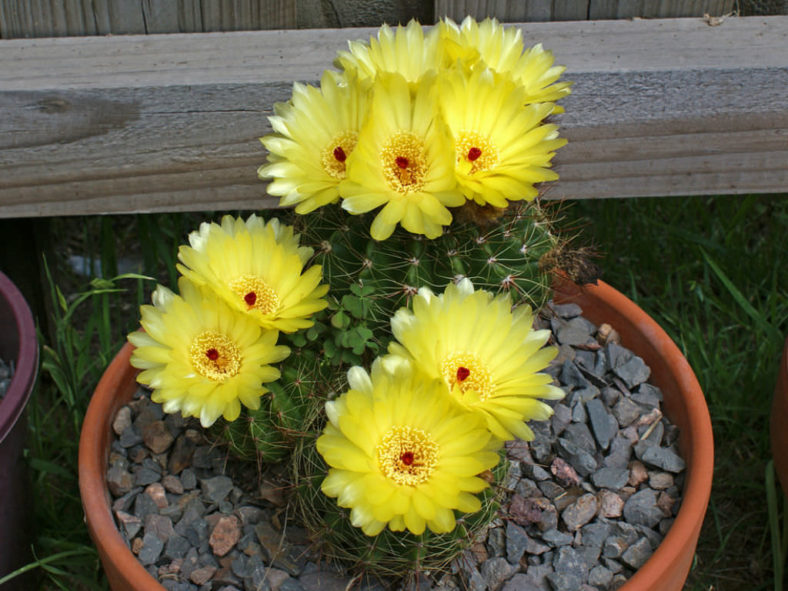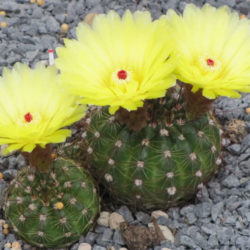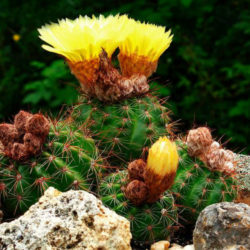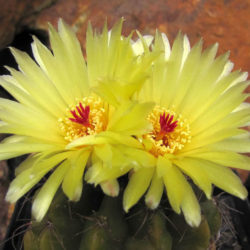Scientific Name
Parodia ottonis (Lehm.) N.P. Taylor
Common Name(s)
Indian Head Cactus
Synonym(s)
Cactus ottonis, Echinocactus ottonis, Malacocarpus ottonis, Notocactus neo-ottoianus, Notocactus ottoianus, Notocactus ottonis, Peronocactus ottonis
Scientific Classification
Family: Cactaceae
Subfamily: Cactoideae
Tribe: Notocacteae
Genus: Parodia
Description
Parodia ottonis, formerly known as Notocactus ottonis, is an attractive dwarf cactus with spherical stems with usually 6 to 12 rounded or sharp-edged ribs. It is solitary at first, forming a clump as it ages. The stems can grow up to 6 inches (15 cm) in diameter and are often tapered towards the base. They are deep green to bluish-green and can get a maroon to purple hue during the winter dormancy. The spines are slender, hair-like, curved or twisted, and up to 1.6 inches (4 cm) long. Each areole bears 1 to 6 central and 4 to 15 radial spines.
The flowers are yellow, with usually red or wine-colored stigma lobes. They are about up to 2.4 inches (6 cm) in diameter and appear in late summer. The flower tube is covered with brownish wool and bristles. The fruits are egg-shaped to short cylindrical, up to 0.5 inches (1.3 cm) in diameter, and contain glossy black seeds.
Origin
Parodia ottonis is native to northeastern Argentina, Uruguay, southern Paraguay, and southern Brazil. It grows in subtropical grasslands.

Hardiness
USDA hardiness zones 9a to 11b: from 20 °F (−6.7 °C) to 50 °F (+10 °C).
How to Grow and Care
If you can grow cacti and succulents successfully, you can likely grow the popular Parodia without too much trouble. However, it is key to remember that Parodias don't like direct sunlight and are accustomed to more even water than many other cacti species. The cactus mustn't be exposed to prolonged dampness and sitting water. Never let your cactus sit in a dish of water. To encourage better flowering, allow the plants to enjoy a cooling period in the winter and dramatically cut back watering. Unlike other cacti species, however, you don't need to stop watering entirely. Lastly, fertilize during the growing season for the best results.
Repot as needed, preferably during the warm season. To repot Parodia, ensure the soil is dry before repotting, then gently remove the pot. Knock away the old soil from the roots, removing any rotted or dead roots. Treat any cuts with a fungicide. Place the plant in its new pot and backfill it with potting soil, spreading the roots out as you repot.
Learn more at How to Grow and Care for Parodia.
Subspecies
Links
- Back to genus Parodia
- Succupedia: Browse succulents by Scientific Name, Common Name, Genus, Family, USDA Hardiness Zone, Origin, or cacti by Genus
Photo Gallery
Click on a photo to see a larger version.


